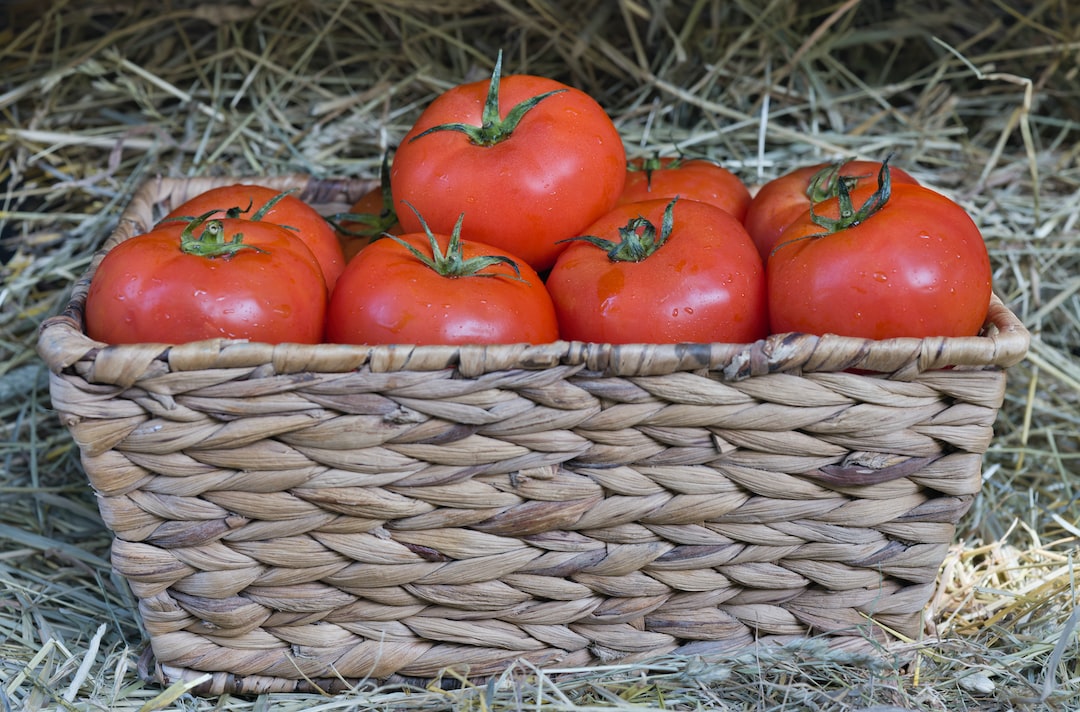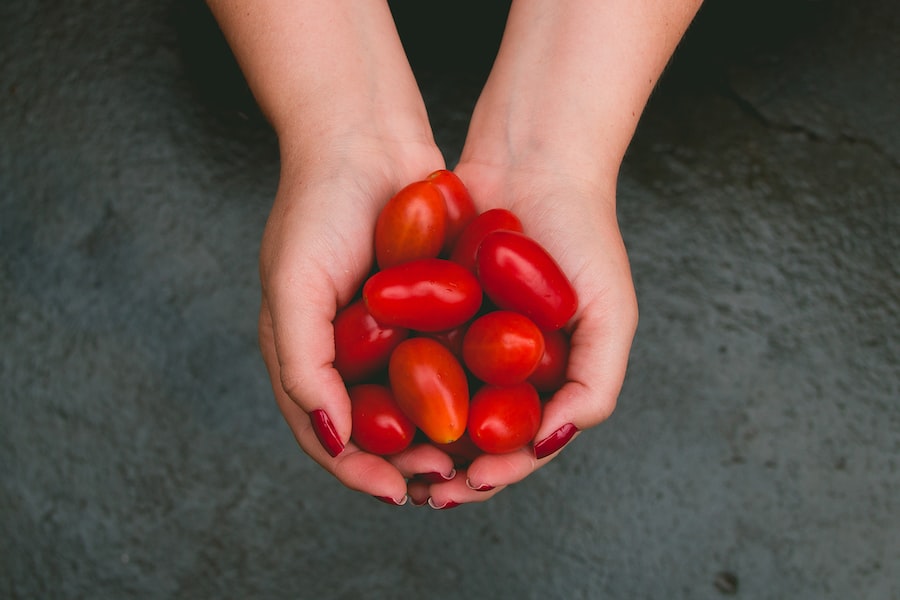Decoding Tomato Types: A Guide to Differentiating Determinate and Indeterminate Varieties

Tomatoes are one of the most popular and versatile fruits in the world. They can be used in a wide variety of dishes, from salads to sauces to soups. However, not all tomatoes are created equal. Understanding the difference between determinate and indeterminate tomato varieties is crucial for successful cultivation and utilization of these plants.
Key Takeaways
- Determinate tomatoes have a compact growth habit and produce fruit all at once, while indeterminate tomatoes grow tall and produce fruit throughout the season.
- Determinate tomatoes are easier to manage and require less staking, but indeterminate tomatoes have a longer harvest period and can produce more fruit.
- Determinate tomatoes are ideal for container gardening and small spaces, while indeterminate tomatoes are better suited for larger gardens and farms.
- To identify determinate and indeterminate tomato plants, look at their growth habit and the way they produce fruit.
- Determinate tomatoes are great for sauces and canning, while indeterminate tomatoes are perfect for salads and sandwiches. Choose the right variety for your cooking needs.
Understanding the Basics: What are Determinate and Indeterminate Tomato Varieties?
Determinate and indeterminate tomato varieties refer to the growth habit of the plants. Determinate tomatoes are compact and bushy, reaching a predetermined height and then stopping their upward growth. They tend to produce their fruit all at once, making them ideal for canning or preserving. Indeterminate tomatoes, on the other hand, continue to grow and produce fruit throughout the growing season. They have a vining habit and require support such as stakes or trellises.
The Growth Habits of Determinate and Indeterminate Tomato Plants
Determinate tomato plants have a predetermined height, usually around 3-4 feet tall. Once they reach this height, they stop growing and focus their energy on producing fruit. This makes them easier to manage and maintain, as they require less pruning and support. Indeterminate tomato plants, on the other hand, can grow indefinitely if given the right conditions. They can reach heights of 6-10 feet or more and require regular pruning and support to prevent them from sprawling on the ground.
The growth habits of determinate and indeterminate tomato plants also affect fruit production. Determinate tomatoes tend to produce their fruit all at once, within a relatively short period of time. This makes them ideal for gardeners who want a large harvest for canning or preserving. Indeterminate tomatoes, on the other hand, produce fruit continuously throughout the growing season. This allows for a longer harvest period but may require more frequent harvesting.
The Advantages and Disadvantages of Determinate and Indeterminate Tomatoes
| Determinate Tomatoes | Indeterminate Tomatoes | |
|---|---|---|
| Advantages | Shorter plants, easier to manage | Continuous fruit production throughout the season |
| Disadvantages | Only produce fruit for a short period of time | Require more pruning and support |
There are pros and cons to growing both determinate and indeterminate tomato varieties. Determinate tomatoes are easier to manage and maintain due to their compact size and predetermined height. They require less pruning and support, making them ideal for gardeners with limited space or time. Additionally, determinate tomatoes tend to produce their fruit all at once, which is advantageous for those who want a large harvest for canning or preserving.
However, there are also disadvantages to growing determinate tomatoes. Since they produce their fruit all at once, there is a limited window of time for harvesting. This can be overwhelming for gardeners who are not prepared to process a large amount of tomatoes at once. Additionally, determinate tomatoes have a shorter harvest period compared to indeterminate varieties.
On the other hand, indeterminate tomatoes have the advantage of producing fruit continuously throughout the growing season. This allows for a longer harvest period and a more consistent supply of fresh tomatoes. Indeterminate tomatoes also tend to have a higher yield compared to determinate varieties. However, they require more maintenance and support due to their vining habit and continuous growth.
How to Identify Determinate and Indeterminate Tomato Plants
Identifying determinate and indeterminate tomato plants can be done by observing their physical characteristics. Determinate tomato plants are usually compact and bushy, with a predetermined height. They tend to have shorter internodes (the space between leaves) compared to indeterminate varieties. Indeterminate tomato plants, on the other hand, have a vining habit and require support such as stakes or trellises. They have longer internodes and can grow indefinitely if given the right conditions.
Another way to distinguish between determinate and indeterminate tomato plants is by looking at their flowers and fruit production. Determinate tomatoes tend to produce their flowers and fruit in clusters, while indeterminate varieties produce them individually or in small clusters along the vine.
The Best Uses for Determinate and Indeterminate Tomatoes in Cooking

The flavor and texture of determinate and indeterminate tomatoes can vary, which makes them suitable for different cooking methods. Determinate tomatoes are often described as having a more concentrated flavor and a firmer texture. This makes them ideal for canning, as their flavor intensifies when cooked down. They are also great for making sauces and salsas, as their firm texture holds up well to cooking.
Indeterminate tomatoes, on the other hand, tend to have a juicier and more acidic flavor. They have a softer texture, which makes them perfect for eating fresh in salads or sandwiches. Indeterminate tomatoes are also great for roasting or grilling, as their juiciness adds moisture to the dish.
Choosing the Right Tomato Variety for Your Garden or Farm
When choosing a tomato variety to grow, there are several factors to consider. First, consider the space you have available. If you have limited space, determinate tomatoes may be the best choice, as they are more compact and require less support. If you have ample space and are willing to provide support, indeterminate tomatoes can be a great option.
Next, consider your intended use for the tomatoes. If you plan on canning or preserving a large amount of tomatoes, determinate varieties that produce their fruit all at once may be the best choice. If you want a continuous supply of fresh tomatoes throughout the growing season, indeterminate varieties are the way to go.
Popular determinate tomato varieties include ‘Roma’, ‘Celebrity’, and ‘Better Bush’. Popular indeterminate tomato varieties include ‘Brandywine’, ‘Cherokee Purple’, and ‘Sun Gold’.
The Role of Climate and Soil in Determining Tomato Type
Climate and soil conditions play a crucial role in determining which type of tomato is best suited for your garden or farm. Determinate tomatoes tend to be more heat-tolerant and can withstand higher temperatures. They are also more resistant to diseases such as Fusarium wilt and Verticillium wilt. Indeterminate tomatoes, on the other hand, are more cold-sensitive and may require protection or early planting in cooler climates.
Soil conditions also affect tomato growth and fruit production. Tomatoes prefer well-drained soil that is rich in organic matter. They thrive in slightly acidic soil with a pH level between 6.0 and 6.8. Determinate tomatoes are more tolerant of poor soil conditions, while indeterminate varieties require fertile soil for optimal growth and fruit production.
Tips for Growing and Maintaining Determinate and Indeterminate Tomato Plants
To successfully grow and maintain determinate and indeterminate tomato plants, there are several best practices to follow. First, choose a sunny location for your tomato plants, as they require at least 6-8 hours of direct sunlight per day. Prepare the soil by adding compost or well-rotted manure to improve its fertility and drainage.
When planting tomato seedlings, bury them deep in the soil, up to the first set of true leaves. This will encourage the development of a strong root system. Water the plants regularly, keeping the soil evenly moist but not waterlogged. Mulching around the plants can help conserve moisture and suppress weeds.
Pruning is important for both determinate and indeterminate tomato plants. For determinate varieties, minimal pruning is required, as they have a predetermined height and do not require support. Remove any suckers that develop below the first flower cluster to promote airflow and prevent disease.
For indeterminate varieties, regular pruning is necessary to control their growth and promote fruit production. Remove suckers that develop in the leaf axils to prevent the plant from becoming too bushy. Prune any branches that are touching the ground or crowding other plants to improve airflow and reduce the risk of disease.
Harvesting and Storing Determinate and Indeterminate Tomatoes
Knowing when and how to harvest tomatoes is crucial for optimal flavor and texture. Determinate tomatoes tend to produce their fruit all at once, so it’s important to keep an eye on them and harvest them as soon as they are ripe. Ripe tomatoes should be firm but give slightly when gently squeezed. They should also have a vibrant color and a strong aroma.
Indeterminate tomatoes can be harvested as they ripen throughout the growing season. Gently twist or cut the stem just above the fruit to avoid damaging the plant. If you have a large harvest, store the tomatoes in a cool, dark place with good airflow. Avoid storing them in the refrigerator, as this can affect their flavor and texture.
Exploring the Wide Range of Tomato Varieties Available Today
There is a wide range of tomato varieties available today, each with its own unique characteristics and uses. Some popular determinate tomato varieties include ‘Roma’, which is known for its meaty texture and rich flavor, and ‘Celebrity’, which is disease-resistant and produces high yields. Popular indeterminate tomato varieties include ‘Brandywine’, which is known for its sweet and tangy flavor, and ‘Cherokee Purple’, which has a rich, smoky flavor.
Other unique tomato varieties include ‘Sun Gold’, a cherry tomato with a sweet, tropical flavor, and ‘Green Zebra’, which has a tangy flavor and striking green stripes. There are also heirloom varieties, which have been passed down through generations for their unique flavors and characteristics.
Understanding the difference between determinate and indeterminate tomato varieties is crucial for successful cultivation and utilization of these plants. Determinate tomatoes are compact and bushy, with a predetermined height, while indeterminate tomatoes continue to grow and produce fruit throughout the growing season. Each type has its own advantages and disadvantages, and the choice of which to grow depends on factors such as space, intended use, climate, and soil conditions.
By following best practices for planting, watering, fertilizing, and pruning tomato plants, you can ensure a successful harvest. Knowing when and how to harvest and store tomatoes will also help preserve their flavor and texture. With the wide range of tomato varieties available today, there is something for every taste and culinary preference. So whether you prefer the concentrated flavor of determinate tomatoes or the juiciness of indeterminate varieties, there is a tomato out there for you.



